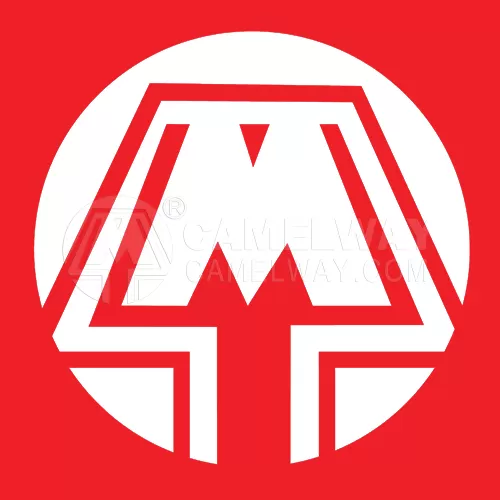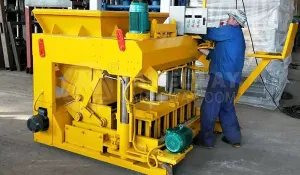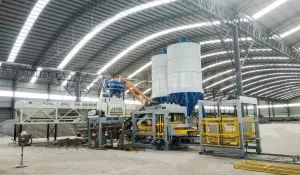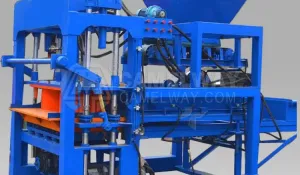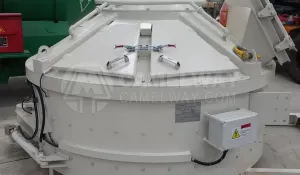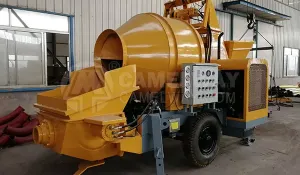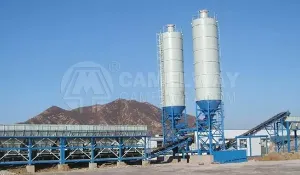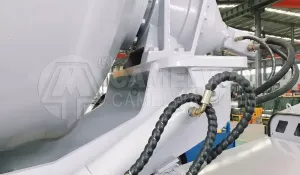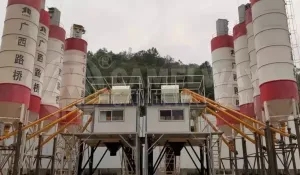Comprehensive technical comparison, installation guidance and procurement checklist for engineers, procurement teams and contractors specifying thermoplastic pavement markings in South Africa and other international markets.
Why this comparison matters
Thermoplastic road marking materials are specified to provide durable, reflective and skid-resistant traffic markings. BS 3262 (British origin) and AASHTO M249 (American origin) are two frequently referenced specifications worldwide. While both target the same functional outcomes, they differ in emphasis, referenced test methods and procurement conventions. An informed specification—tailored to project climate, traffic loading and acceptance testing—reduces rework, lowers lifecycle cost and improves road safety.
Why this comparison matters
Thermoplastic road marking materials are specified to provide durable, reflective and skid-resistant traffic markings. BS 3262 (British origin) and AASHTO M249 (American origin) are two frequently referenced specifications worldwide. While both target the same functional outcomes, they differ in emphasis, referenced test methods and procurement conventions. An informed specification—tailored to project climate, traffic loading and acceptance testing—reduces rework, lowers lifecycle cost and improves road safety.
Standards background — a quick primer

BS 3262 is a British standard that details requirements for hot-applied thermoplastic marking materials, focusing on composition, application behaviour and performance measures relevant to UK and Commonwealth practice. AASHTO M249 is an American specification used for thermoplastic pavement markings with emphasis on retroreflective performance, bead interaction (AASHTO M247) and field acceptance testing.
Practically, both standards require that material be hot-applied, that glass beads be used to provide retroreflectivity and that physical properties (softening point, skid resistance, stability at melt temperature) be reported and tested.
Direct technical comparison (high-level)
| Criterion | BS 3262 (typical) | AASHTO M249 (typical) |
| Scope | Hot-applied thermoplastic materials; UK/Commonwealth practice | Hot-applied thermoplastic striping material; US & international practice |
| Key emphasis | Material composition, softening point, adhesion and durability | Retroreflectivity, bead specification (AASHTO M247) and field performance |
| Softening point | ≥ ~90°C typical; suppliers often design 95–110°C for hot climates | ≥ ~90°C typical; high-softening grades common for hot environments |
| Melt / application temp | ~180–200°C (observe TDS limits) | ~180–200°C (observe TDS limits) |
| Retroreflectivity | Prescribed minimums in practice; measured per recognized methods | Specific RL thresholds commonly required; tied to bead spec and application |
| Glass beads | Compatible with standard bead specs; premix or drop-on | Explicit reference to AASHTO M247 for bead properties and gradation |
| Typical service life | 2–5 years (traffic & environment dependent) | 3–5 years (traffic & environment dependent) |
| Regional usage | UK, Commonwealth, Africa, Asia (often referenced by municipal specs) | USA, North America, international tenders that adopt US practice |
Detailed technical parameters — what to specify
Below are the technical items procurement and engineering teams commonly place into tender documents to ensure measurable performance.
| Parameter | Recommended minimum / note | Why it matters |
| Softening point (Ring & Ball) | ≥ 90°C (specify higher for hot climates: 95–105°C) | Controls deformation risk under high surface temperature and heavy loads. |
| Initial retroreflectivity (RL) | Specify numeric RL thresholds per colour (e.g., White ≥ 300 mcd/m²/lx; Yellow ≥ 200 mcd/m²/lx) when measured per ASTM/ECE method | Ensures night-time visibility meets safety targets. |
| Glass bead standard & application rate | Beads per AASHTO M247; premix ≥20% by weight or drop-on rate 250–400 g/m² (adjust by traffic) | Beads provide retroreflectivity; correct rate balances performance vs cost. |
| Skid resistance | BPN ≥ 45 (or project target); measure on sample panels | Prevents slip accidents, especially on wet surfaces. |
| Thickness | 1.5–3.0 mm for typical highway lines; define by line type | Thickness affects durability, retroreflectivity and material consumption. |
| Heat stability | Material must remain stable after a 4-hour heat test at working temp | Prevents burning/chemistry breakdown during continuous melting and use. |
| Colour fastness / TiO₂ content (white) | Specify TiO₂ grade or luminance factor threshold for whites | Controls long-term brightness and reduces yellowing. |
Installation & quality control — recommended best practices
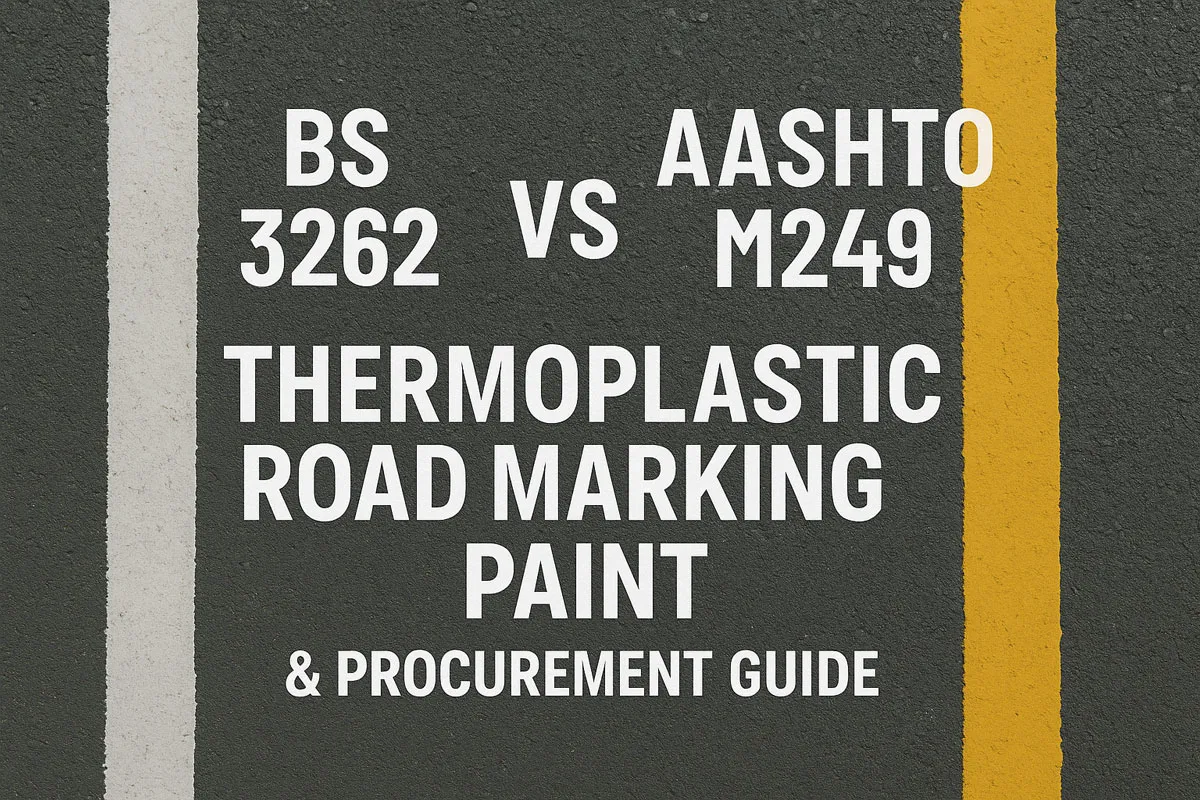
- Surface preparation: remove loose material, oil and contaminants. Patching and leveling must precede marking.
- Melting & handling: follow supplier TDS — never overheat; maintain melt temperature within specified band and document kiln runs.
- Bead application: for drop-on beads, apply immediately after extrusion/screed. Verify bead dispenser calibration daily.
- Thickness control: use calibrated screed/extrusion heads or multiple passes; measure finished profile randomly.
- Acceptance testing: measure RL at night after 7–14 days; perform BPN testing on representative panels.
- Recordkeeping: batch numbers, production dates, lot test certificates and site QC logs should be archived.
Practical acceptance protocol example: "One trial panel per product per contractor; measure RL at 10 m intervals across 20 m length; accept if mean RL ≥ specified threshold and no single measurement < 80% of mean."
Performance expectations & lifecycle costing
Realized service life depends on traffic mix (axle load), climate and workmanship. Typical observed ranges:
- Highway (heavy trucks): 3–5 years for properly applied thermoplastic (M249/3262 compliant)
- Urban arterials (mixed traffic): 2–4 years
- Low-speed municipal roads: 2–3 years
When preparing procurement cost models, include: material cost, application cost (labour & equipment), expected lifespan and maintenance cycle cost. In many cases, thermoplastic (higher initial cost) yields lower lifecycle cost than short-life cold paints due to fewer reapplications.
Case studies — practical examples
Case A — Urban highway upgrade (South Africa, illustrative)
On a multi-lane corridor resurfacing project, cold solvent paints showed significant wear within 9–12 months under heavy taxi and truck flows. Switching to M249-grade thermoplastic with 25% premix beads and 2.2 mm finished thickness increased measurable RL retention and extended service life to 3+ years. The operator documented a 35–45% reduction in annual re-marking cost.
Case B — Port access route (tropical / high UV)
Port roads with heavy container traffic commonly abrade paint quickly. High softening point thermoplastic (≥100°C) with higher bead drop rates produced improved bead retention and consistent night visibility, reducing maintenance windows and disruptions to freight flows.
Procurement checklist & suggested contract clauses
Include the following in tender documents to reduce ambiguity and support enforceable QA:
- Reference the exact edition of the standard (e.g., "Material shall comply with AASHTO M249, edition X, or BS 3262, edition Y as specified").
- Require batch certificates and manufacturer QA records with each shipment (softening point, bead premix %, RL lab results).
- Sample panel requirement: supplier to provide representative trial panels; acceptance based on measured RL and BPN.
- Acceptance sampling: define lot size, number of samples and testing lab accreditation.
- Remediation clause: supplier to re-mark underperforming lots within warranty period at no cost if RL falls below contractual threshold.
- Traceability & labeling: batch number, production date and TDS/SDS must accompany each delivery.
Sample clause (bead & RL): "Thermoplastic shall be applied with certified glass beads (AASHTO M247). Initial mean retroreflectivity measured per ASTM E1710 on panel after 7 days shall be ≥ [X] mcd/m²/lx for white and ≥ [Y] mcd/m²/lx for yellow. Drop rates and premix content shall be recorded and submitted weekly."
Environmental, safety & operational notes
- Implement PPE and fume management for melt operations.
- Manage bead overspray and runoff; consider bead capture measures at wash stations to reduce environmental loading.
- Train crews on correct melt temperatures and avoid overheating which can alter polymer properties.
Which standard to choose — practical guidance
Choose BS 3262 when procurement documents reference UK/Commonwealth practice, municipal specifications or when bidders already supply BS-compliant product. Choose AASHTO M249 when the project follows US practice, international tenders request AASHTO compliance or where retroreflectivity clauses tied to AASHTO M247 bead specs are important. Where feasible, include an equivalence clause allowing either standard provided measured field performance (RL, BPN, softening point) meets or exceeds tender thresholds.
References & further reading
British Standards Institution (BSI) — BS 3262; AASHTO — M249 & M247; ASTM methods for retroreflectivity (E1710); SANRAL / South African Road Authority publications; manufacturer TDS & peer-reviewed technical literature on thermoplastic pavement markings; major bead manufacturers (3M, Potters, etc.) guidance.
Contact & technical support
CAMELWAY technical team can supply: certified material certificates, lab test reports, site supervision for first installations, bead selection guidance and customised specimen clauses for tender documents. Request TDS, SDS & Sample Panels
Note on authenticity: This page is written to provide practical, verifiable guidance for specification and procurement. For contractual use always reference the authoritative standards documents and include lab verification clauses.
© 2025 CAMELWAY — Thermoplastic Road Marking Materials • Technical Team

